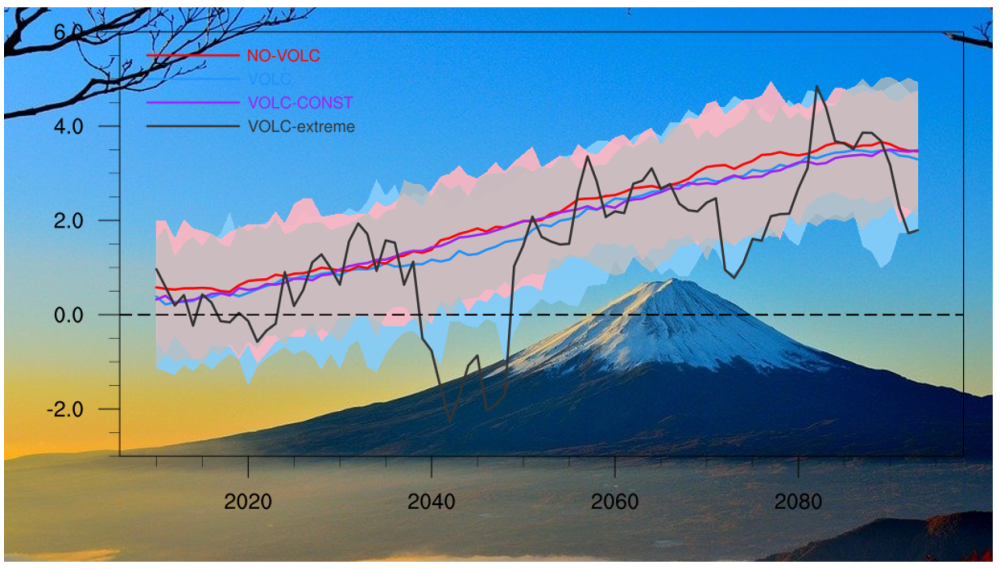中国科学院大气物理研究所大气科学和地球流体力学数值模拟国家重点实验室
State Key Laboratory of Numerical Modeling for Atmospheric Sciences and
Geophysical Fluid Dynamics (LASG)
Institute of Atmospheric Physics, Chinese Academy of Sciences
State Key Laboratory of Numerical Modeling for Atmospheric Sciences and
Geophysical Fluid Dynamics (LASG)
Institute of Atmospheric Physics, Chinese Academy of Sciences

Vol.15/No.15 April 2021
Scientists Study Potential Volcanic Impacts on Future Global Land Monsoon Precipitation Changes
An international cooperative study led by the Institute of Atmospheric Physics at the Chinese Academy of Sciences, reveals the potential volcanic impacts on the future changes of global land monsoon (GLM) precipitation in different projection periods and different monsoon subdomains.
The team used sixty plausible eruption scenarios sampled from reconstructed volcanic proxies over the past 2,500 years, and found that episodic volcanic forcing not only leads to a 10% overall reduction of the GLM precipitation, but also causes larger ensemble spread (~20%) compared to no-volcanic and constant background-volcanic scenarios. Changes in monsoon circulation in the aftermath of large volcanic eruptions match the global warming response patterns well with opposite sign. Moreover, volcanic activity is projected to delay the time of emergence of anthropogenic GLM precipitation changes by five years on average over about 60% of the GLM area.

Changes of global land monsoon precipitation in projections with different eruption scenarios. (Image by MAN Wenmin)
This study, published in Earth's Future, is a step towards incorporating volcanic forcing in future climate projections in a systematic and realistic way. "I hope it can help develop creditable projection of future changes of global monsoon, and understand climate projection uncertainty related to the unknown future volcanic activity." Said Dr. MAN Wenmin, the lead author of the study.
This research was supported by the National Natural Science Foundation of China (Grants No. 41675802, 42075041) and the National Program on Key Basic Research Project of China (Grants 2017YFA0604601, 2020YFA0608902).
Reference:Man, W., Zuo, M., Zhou, T., Fasullo, J. T., Bethke, I., Chen, X., et al. (2021). Potential influences of volcanic eruptions on future global land monsoon precipitation changes. Earth's Future, 9, e2020EF001803, https://doi.org/10.1029/2020EF001803.
Link: https://agupubs.onlinelibrary.wiley.com/doi/10.1029/2020EF001803
Contact:MAN Wenmin, manwenmin@mail.iap.ac.cn
Add: No.40, Huayanli, Beichen West Road, Chaoyang District, Beijing P.O. Box 9804, 100029, China
E-mail: lasg_newsletter@lasg.iap.ac.cn
Editors: Chuanyi Wang (wangcy@lasg.iap.ac.cn), Kangjun Chen(ckj@lasg.iap.ac.cn)
E-mail: lasg_newsletter@lasg.iap.ac.cn
Editors: Chuanyi Wang (wangcy@lasg.iap.ac.cn), Kangjun Chen(ckj@lasg.iap.ac.cn)